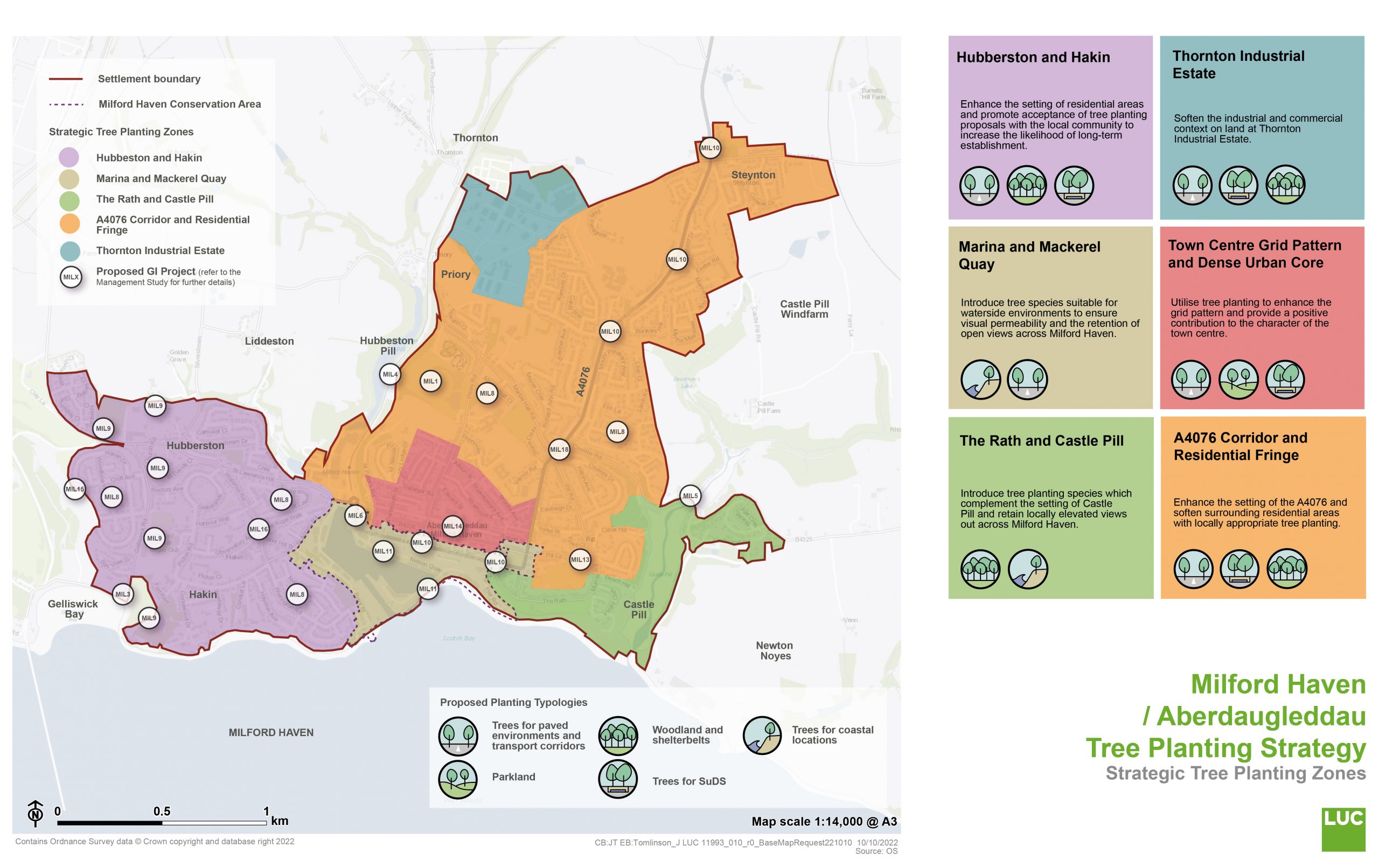- Prioritise tree planting in areas with the least site constraints, such as larger areas of amenity grassland and verges, including areas with minimal recreational value due to slope / small size etc.
- Implement infill planting on streets with existing trees and where there are gaps, to strengthen existing tree corridors, which are small and fragmented.
- Incorporate tree planting across housing estates, integrating well-spaced parkland trees where space allows. Ensure sightlines are maintained for safety. Avoid creating areas of dense planting that may encourage antisocial behaviour, prioritising well-spaced high canopy trees, or narrow fastigiate species. Consult with, and engage, nearby residents throughout the process to increase the likelihood of long-term success. Ensure sufficient space between tree planting and residential dwellings to maintain views and access to light.
- Avoid proposals that conflict with private vehicular access points on residential streets.
- Tree planting proposals should avoid obstruction of highways and Public Rights of Way (PRoW) within the residential context.
- Enhance tree canopy cover within parks and open spaces. Prioritise planting of large canopy trees where space permits.
Milford Haven Tree Planting Zones and Sub-Principles
Tree Planting Zones and Sub-Principles for Milford Haven are shown on the map and drop down list below. Click on the headings to expand.
Milford Haven Strategic Tree Planting Zones - Download image

×![]()
Milford Haven Strategic Tree Planting Zones
Zones and Sub-Principles
Land encompassed within Milford Haven Conservation Area includes the spaces between buildings and existing trees within the designation. PCC should therefore be contacted prior to the commencement of works on existing trees subject to a Tree Preservation Order (TPO) or those located within the boundary of Milford Haven Conservation Area.
- Utilise tree planting to screen and soften industrial and commercial areas.
- Ensure that proposed tree planting complements the scale of existing built form. Where space permits, the potential exists to accommodate large trees within the industrial and commercial setting.
- Integrate additional tree planting at the Marina and Quay with suitable species to create areas with shelter, whilst also maintaining visual permeability and views out to the sea. Consider the incorporation of additional trees when renovating existing planted areas.
- Ensure landscape management and future tree planting maintains views to the coast from elevated areas (e.g. key viewpoints from Hamilton Terrace).
- Use trees to mark and define different zones leading to the Marina and Quay, e.g. from entrances to the waterfront from cycle routes, Nelson Quay and leading down from Victoria Road.
- Consider integrating trees to break up the expansive car park area, ensuring the location does not interfere with existing uses. Integrate trees in small clusters to create a microclimate to improve growing conditions, and allow the incorporation of shared growing pits / rooting space.
- Use tree planting in hard landscape to enhance the setting of local facilities and restaurants, and screen detracting features such as the car park on Nelson Quay.
- Extend and link up existing street tree planting at key centres (i.e. Charles Street) to create green routes and enhance the streetscape. Ensure tree planting compliments and does not detract from the distinctive grid pattern of the urban area. Incorporate trees nearby wider junctions and to mark entrances to the main shopping areas, using trees with a narrow form where necessary to maintain sightlines.
- Utilise tree planting to soften larger areas of hard landscape such as car parking areas (e.g. Robert Street). And other visually detracting features.
- Reconfigure on street parking where the opportunity arises to provide additional space for tree pits and width for tree growth.
- Sensitively incorporate additional low density tree planting or small groups of trees on grassland at The Rath. Ensure tree planting is located to maintain visual permeability to the coast from residential areas, seating areas and other viewpoints.
- Trees should be located lower down on sloped areas, with particular consideration given to eventual height and form. Particular attention should be given to selecting species that can withstand the exposure, taking note of species growing nearby.
- Buffer and expand existing woodland at Castle Pill / Deadman’s Lake and seek opportunities to enhance woodland edge treatments on adjacent agricultural land.
- Use tree planting to buffer and screen busy route corridors, utilising roadside verges for avenues or small groups of trees where appropriate.
- Use ornamental tree species to mark key gateways and entrances towards Milford Haven.
- Strengthen links to larger areas of woodland adjacent to Deadman’s Lake, incorporating additional planting at adjacent amenity green space (e.g. Steynton Road / Mount Pleasant Way)
- Utilise tree planting to enhance the setting of residential areas, creating tree-lined streets where possible. Sufficient consideration should be given to species selection, ultimate canopy size and maintenance requirements to promote long-term establishment and reduce interference with buildings and services (e.g. telegraph lines / lighting columns).
- Prioritise tree planting in areas with the least site constraints, such as larger areas of amenity grassland and verges, including areas with minimal recreational value due to slope / small size etc.
- Avoid proposals which conflict with private vehicular access points on residential streets.
- Tree planting proposals should avoid obstruction of highways and Public Rights of Way (PRoW) within the residential context.
- Enhance the character of local open spaces and sport facilities with boundary trees, incorporating larger canopy parkland trees where space allows. Ensure sightlines are maintained to provide a sense of safety and security.
